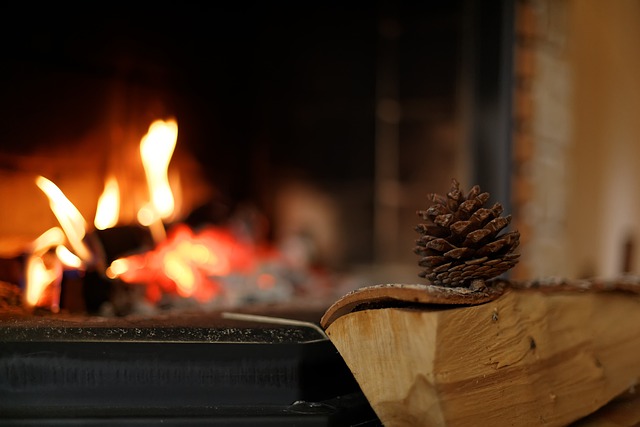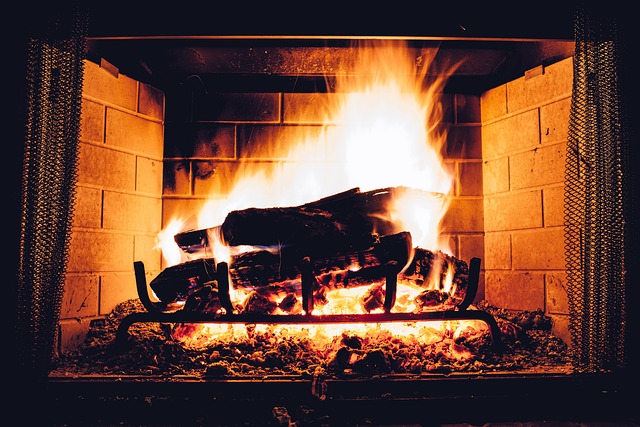When the temperatures drop as the winter season approaches, you will likely spend much of your time putting on extra clothing layers and cranking up the heat in your home. The thing is, winter for some homeowners is a terrible time because their homes are always cold!
The sad truth is that many homes across the country don’t do an excellent job retaining heat indoors and keeping cold air outside. As such, it can always feel freezing in those properties, even during the middle of the day with the sun shining and flooding each room with warmth.

If that paints a familiar picture, you’re probably here because you want to know the best ways of improving the warmth in your home. Without any further ado, here is what you need to know and the steps you should start taking:
Replace Your Windows And Doors
Did you know that heat often escapes through old or damaged windows and doors? The heat can often escape through gaps in glass window panes and around door and window frames.
If you can feel cold air coming through any of your closed windows and doors, the chances are high that heat from inside your home is going out of them. As you can appreciate, you are ultimately wasting money on heating costs, and your home isn’t getting warm.
The best solution is to replace your windows and doors with brand new ones. A window renewal by Andersen Window Replacement, for instance, will ensure there are no gaps around your windows, and your replacements will even transform the look of your home.
Upgrade Your Furnace
Everyone relies on the furnaces in their houses to generate heat and provide hot water throughout their homes. When they’re working as expected, furnaces are very efficient at what they do, and they can provide many years of trouble-free service.
However, you should never assume that your furnace will last forever. There will come a time where you need to pay for repairs as some of its internal components wear out due to regular use.

Another point to consider is that your furnace will eventually get to an age where replacement parts are no longer available due to the manufacturer stopping support for your furnace.
How long a furnace economically lasts will depend on who you ask. Generally speaking, you should get up to ten years of service as a minimum out of a modern furnace before you need to think about replacing it.
A furnace’s longevity will depend on other factors, such as how often it gets used; seldom-used furnaces will last longer than ones that are operational every day.
If your furnace needs regular maintenance and repairs, you will likely find it more cost-effective to upgrade it to a new, energy-efficient model.
Consider Some Low-Tech Options
Replacing your doors and windows and upgrading your furnace are undoubtedly significant investments in your home. Sadly, not everyone can afford such changes in their homes if their disposable income is low.
However, there are some low-tech ways to keep your home warm during winter. For example, you could buy some thicker curtains for your windows, let sunlight flood your windows during the day, and plug any gaps where cold air might enter.
You’ll often find the low-tech options can offer a significant improvement on their own. When they get coupled with more expensive changes like new windows, doors, and furnaces, they’ll provide an additional bonus.
Invest In Insulation
Does your house have any proper insulation? If the answer is no, you need to look at investing in whole-house insulation. You can get your walls and attics insulated so warm air from inside your home doesn’t escape through any exterior-facing elements of your house.
There are many different types of insulation you can get for your home, so you’ll likely find a perfect solution for your home’s construction type and your budget.
You might be considering a DIY insulation option to save money. However, it makes more sense to have a professionally installed insulation solution for your home.
Firstly, using an insulation contractor will mean you get a professional installation that offers optimal heat retention. Secondly, they will select the best insulation material for your house and will likely use one that’s not available in hardware stores, for example.
Lastly, you will get a warranty for the work, so if the insulation fails for whatever reason, you can have the problem rectified without needing to pay anything extra.
Get Carpet Fitted In All Rooms
You might have your heart set on wood flooring. However, the downside to such flooring is how heat can escape through gaps in floorboards. Also, if everyone is downstairs during the day, you want the heat to stay downstairs as much as possible.
Carpet is a relatively simple yet effective way of keeping rooms warm. For instance, the carpet will block heat from escaping through it. What’s more, walking on the carpet barefoot won’t make you feel cold compared to doing so on wood flooring or tiles.
The carpet you choose is, of course, down to personal preference. You should select carpet according to your styles and tastes, but whichever carpets you choose, ensure they are good quality examples that will stand up to wear and offer excellent heat retention.
After all: the last thing you want to do is go to the expense of buying new carpets for your home only to discover they get worn after just a year or two of use.
Be Strategic About Furniture Placements
One final thing you should do is be strategic about where you place your furniture. For example, if your sofa is in front of a heating radiator, it will block heat from permeating the room.
The idea about strategizing your furniture placements is that your furniture doesn’t stop hot air from circulating in each room in your home. It’s also a good opportunity to get rid of furniture you don’t want.